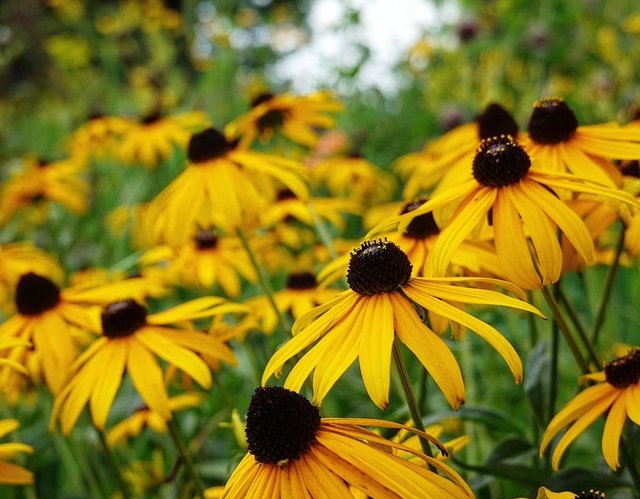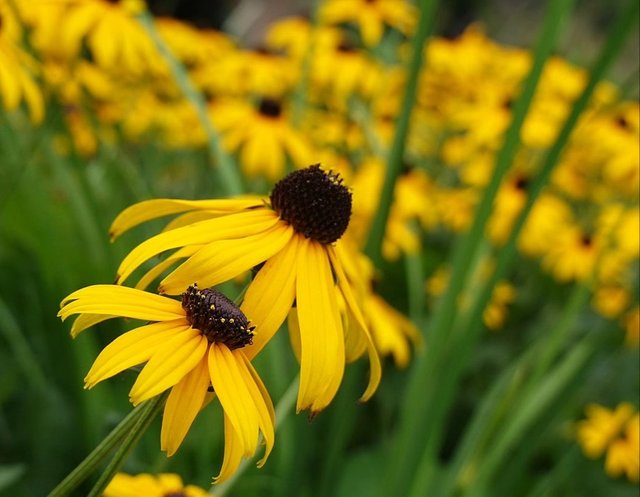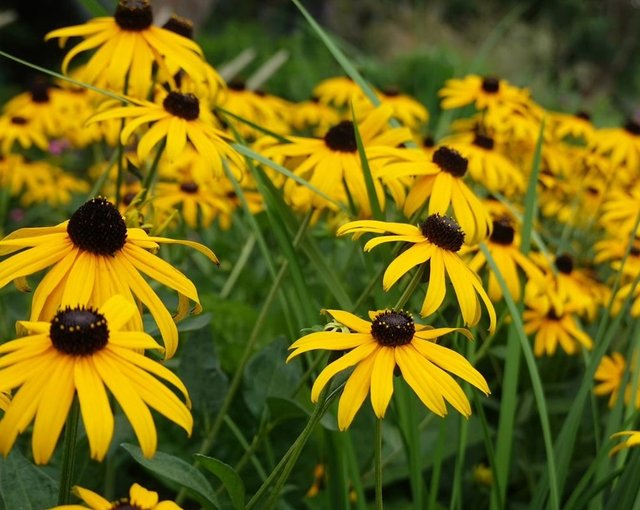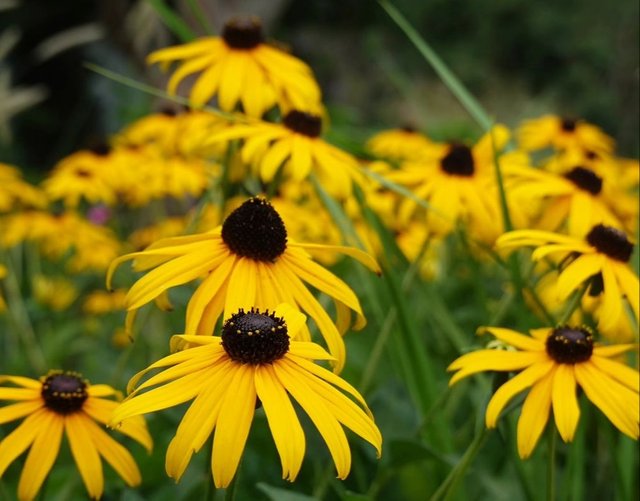Amazing Colour Black-eyed Susan Flower
The Black-eyed Susan is a beloved wildflower native to North America. Its bright yellow petals and dark brown, almost black, center make it a standout in gardens and natural landscapes. Named for its resemblance to a human eye, the Black-eyed Susan is more than just a pretty face; it has a rich history, diverse uses, and a significant role in the ecosystem.
Description and Habitat
The Black-eyed Susan is a member of the Asteraceae family, which includes daisies and sunflowers. It typically grows to about 2-3 feet tall, with lance-shaped leaves and sturdy, hairy stems. The flowers, which bloom from June to October, are about 2-3 inches in diameter. Each flower head consists of numerous yellow ray florets surrounding a central cone of dark brown disk florets.
This resilient plant is found across the United States and Canada, thriving in a variety of habitats including prairies, meadows, and roadsides. It prefers full sun and well-drained soil but is remarkably adaptable and can tolerate poor soil and drought conditions.
Historical and Cultural Significance
The Black-eyed Susan holds a special place in American culture. It is the state flower of Maryland, chosen for its bright and cheerful appearance. The flower is also a symbol of encouragement and justice, often associated with the phrase "justice will prevail."
Native American tribes utilized the Black-eyed Susan for its medicinal properties. The plant was used in poultices for sores and swelling, as well as in teas to treat colds, flu, and snake bites. While these traditional uses are less common today, the plant's historical significance remains an important part of its legacy.
Ecological Importance
The Black-eyed Susan plays a crucial role in supporting pollinators. Bees, butterflies, and other insects are attracted to its bright flowers, which provide a rich source of nectar and pollen. The plant's seeds are also a food source for birds, particularly goldfinches.
In addition to supporting wildlife, the Black-eyed Susan helps maintain soil health. Its deep roots prevent erosion and improve soil structure, making it an excellent choice for naturalizing and restoring habitats.
Growing and Caring for Black-eyed Susans
Black-eyed Susans are easy to grow and care for, making them a popular choice for gardeners of all skill levels. Here are some tips for growing this vibrant flower:
Planting: Sow seeds directly in the garden in late spring or early summer, or start them indoors about six weeks before the last frost. Space the seeds about 12-18 inches apart to allow for proper growth.




Thanks For Reading
Device Information
| Device | Redmi Note 10 Pro |
|---|---|
| Lens | 64 mp |
| Location | Bangladesh |
